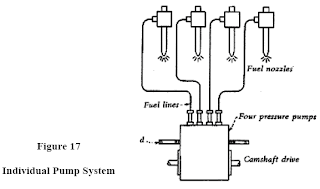What is VRF Air Conditioning System?
VRF air-conditioning systems owe their growing popularity to their ability to meet a wide range of requirements, as Tony Nielsen explains.
The primary function of all air-conditioning systems is to provide thermal comfort for building occupants. There is a wide range of system types available, staring with the basic window-fitted unit through to the very latest VRF (variable refrigerant flow) equipment. Deciding which system best suits the application will depend on several variables. For example, in a modern, design-conscious office the aesthetic requirements of the client may prove of greater importance than the number of control options they provide. While a client looking for the best life-cycle cost will need to balance capital cost with long-term operating costs, efficiency and predicted
VRF systems provide cooling and heating using refrigerant (R407C or R410A) as the working fluid. There are two basic types of VRF system — cooling/heating-only and energy-recovery.
Cooling/heating-only can provide just cooling or, with the incorporation of a heat pump, cooling or heating to the space — but not both at the same time.
The energy-recovery system, can provide cooling and heating simultaneously, to different parts of the building. This feature has the potential to deliver maximum energy savings. Further, a heat-recovery system can transfer the heat extracted from those spaces requiring cooling to areas demanding heating — resulting in extremely high primary-energy ratios and low operating costs.
Outdoor units are available with different cooling and heating capacities to suit the application. A host of controller options is available, from simple wireless controllers to powerful PC software packages. Finally, all the units are linked using transmission cable, providing a fully networked air-conditioning system.
Basic principle of operation:
When in the cooling mode, indoor units are supplied with liquid refrigerant. The amount of refrigerant flowing through the unit is controlled via an electronic expansion valve located inside the unit. When the refrigerant enters the coil it undergoes a phase change (evaporation) that extracts heat from the space, thereby cooling the room. The heat extracted from the space is exhausted to ambient air.
When in the heating mode, indoor units are supplied with hot gas refrigerant. Again, the amount of hot gas flowing through the unit is controlled via the same electronic expansion valve. As with the liquid refrigerant, the hot gas undergoes a phase change (condensation), which releases heat energy into the space
The primary function of all air-conditioning systems is to provide thermal comfort for building occupants. There is a wide range of system types available, staring with the basic window-fitted unit through to the very latest VRF (variable refrigerant flow) equipment. Deciding which system best suits the application will depend on several variables. For example, in a modern, design-conscious office the aesthetic requirements of the client may prove of greater importance than the number of control options they provide. While a client looking for the best life-cycle cost will need to balance capital cost with long-term operating costs, efficiency and predicted
VRF systems provide cooling and heating using refrigerant (R407C or R410A) as the working fluid. There are two basic types of VRF system — cooling/heating-only and energy-recovery.
Cooling/heating-only can provide just cooling or, with the incorporation of a heat pump, cooling or heating to the space — but not both at the same time.
The energy-recovery system, can provide cooling and heating simultaneously, to different parts of the building. This feature has the potential to deliver maximum energy savings. Further, a heat-recovery system can transfer the heat extracted from those spaces requiring cooling to areas demanding heating — resulting in extremely high primary-energy ratios and low operating costs.
Outdoor units are available with different cooling and heating capacities to suit the application. A host of controller options is available, from simple wireless controllers to powerful PC software packages. Finally, all the units are linked using transmission cable, providing a fully networked air-conditioning system.
Basic principle of operation:
When in the cooling mode, indoor units are supplied with liquid refrigerant. The amount of refrigerant flowing through the unit is controlled via an electronic expansion valve located inside the unit. When the refrigerant enters the coil it undergoes a phase change (evaporation) that extracts heat from the space, thereby cooling the room. The heat extracted from the space is exhausted to ambient air.
When in the heating mode, indoor units are supplied with hot gas refrigerant. Again, the amount of hot gas flowing through the unit is controlled via the same electronic expansion valve. As with the liquid refrigerant, the hot gas undergoes a phase change (condensation), which releases heat energy into the space



Comments